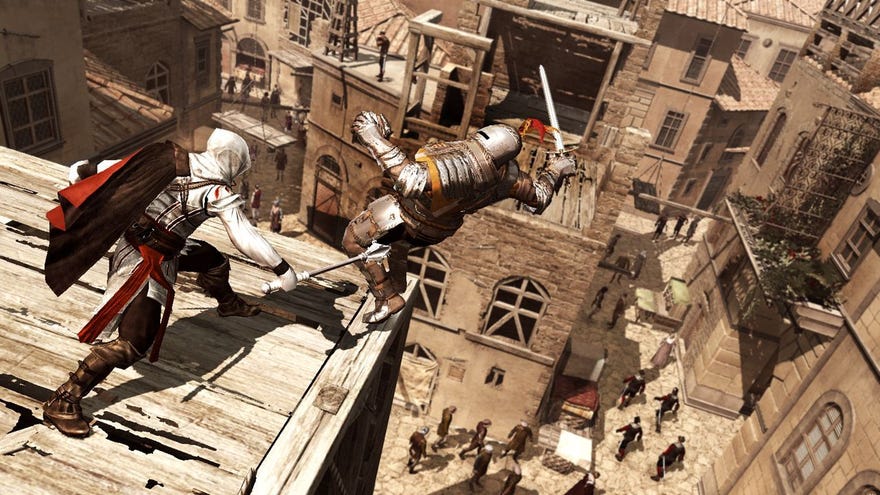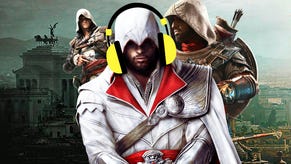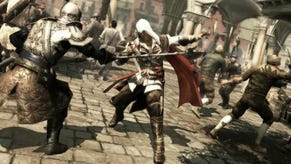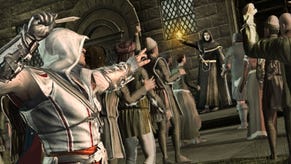The joy of throwing guards around in Assassin's Creed 2
Renaissance manhandling
Ezio Auditore, the fire of Firenze, pulls the guard close in passionate embrace. It’s an intimacy born not of love but its close cousin, hate. Gripping the man around the neck, Ezio holds him steady so that a nearby thief - hired at a fixed rate of 150 florins for an indefinite period of rooftop troublemaking - can take a free swing at his exposed abdomen. The sword connects, though not with its intended target. Instead it catches Ezio in the shoulder, knocking the assassin off-balance. He teeters backward across the tiles and over the lip of the building, falling three floors into the packed street below. The farce of it all is worth every one of the twelve hitpoints he loses in the process.
It’s one of many outcomes made possible by the grab button - in retrospect, the finest part of Assassin’s Creed 2’s busy, experimental moveset. This was back when Patrice Désilets still held the reins, and pursued a strange strategy whereby the face buttons on a controller corresponded to parts of the protagonist’s body. Square and Circle represented the arms, and so the latter could be used to gently push through a crowd in ‘low profile’, or deal rather more forcibly with the citizenry in ‘high profile’. Sometimes, the Python-esque bards who serenaded you unbidden didn’t deserve to be paid off with a fistful of coins. They were better served by constructive feedback, picked up by the scruff of their necks and hurled across the cobbles.
Enemies in Assassin’s Creed 2 are thrown the way Tom Cruise is ejected from a bar in the new Top Gun movie: with gusto. Though it must be said, the thrown do a lot of the work for you, each time transitioning from a running stumble into a flying faceplant, a truly Olympian performance in the field of slapstick gymnastics. The sheer distance they cover will almost always guarantee a collision, be that with a fellow guard, rickety tower of scaffolding, or sudden realisation that the ground has vanished beneath their feet. It’s the ‘yes, and…’ of improvisational calamity. Venice, in particular, is happy to provide preciptious drops and instakill canals in every conceivable direction you might fling a bloke.

Though the throw is nuanced - allowing you to steer your unfortunates in any direction, in different contexts, to specific ends - it’s also broad and splashy in a way I miss. In the sequels that followed, Assassin’s Creed developers increasingly demanded precision from players. Stealth in Assassin’s Creed Unity felt like playing Splinter Cell in four dimensions - accounting for enemy eyes on multiple planes while manouvering your avatar silently through windows and down ladders. And while I do relish that challenge, it felt like a denial of what we all knew: that controlling a character in the pre-RPG Assassin’s Creed games was a messy business, in which the intent of your key presses was not always reflected on-screen.
The genius of Assassin’s Creed 2 and its grab ‘n’ throw was that it embraced the muddiness of your inputs, turning your mistakes into comedy that could be celebrated, even as your plans turned to pratfalls. It’s a lesson Ubisoft would do well to remember before it chucks its latest soft reboot, Assassin’s Creed Mirage, out over the eaves and into the waiting crowd below.










